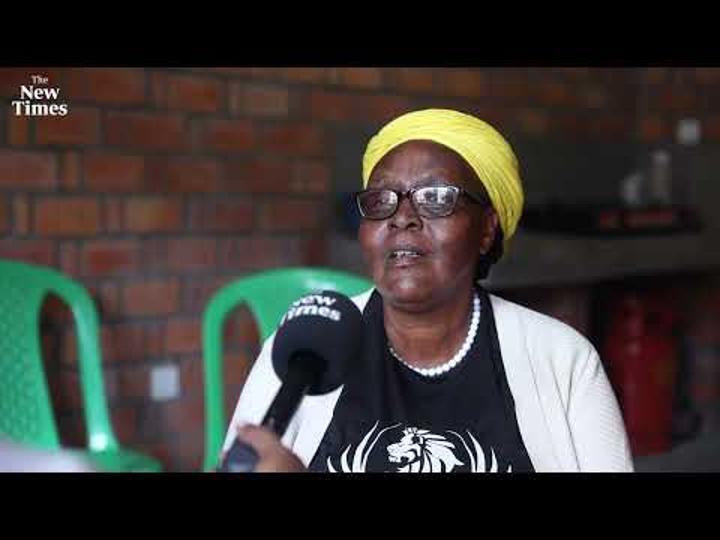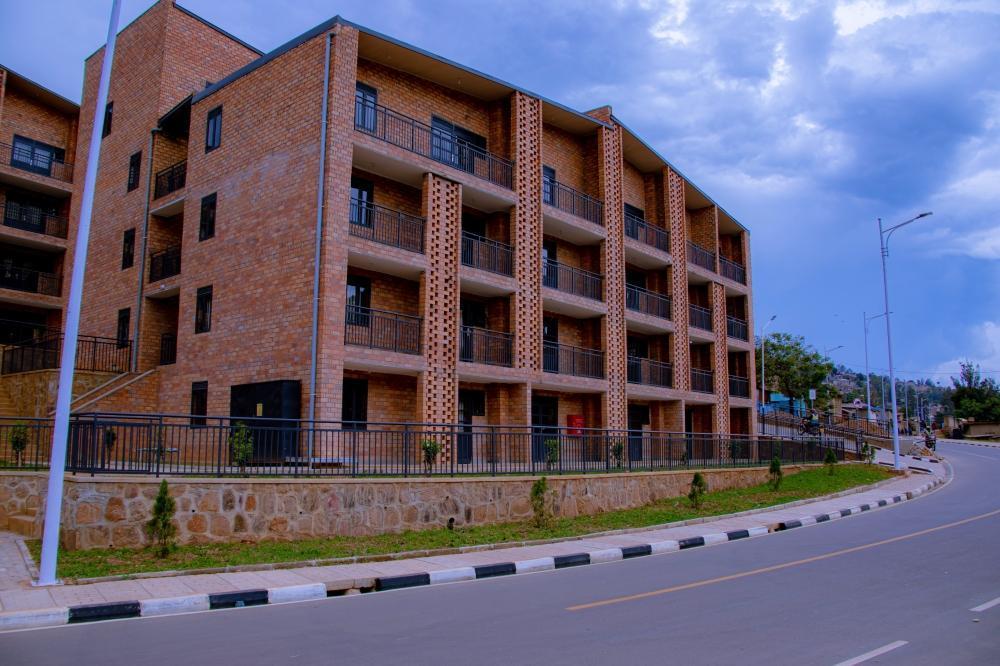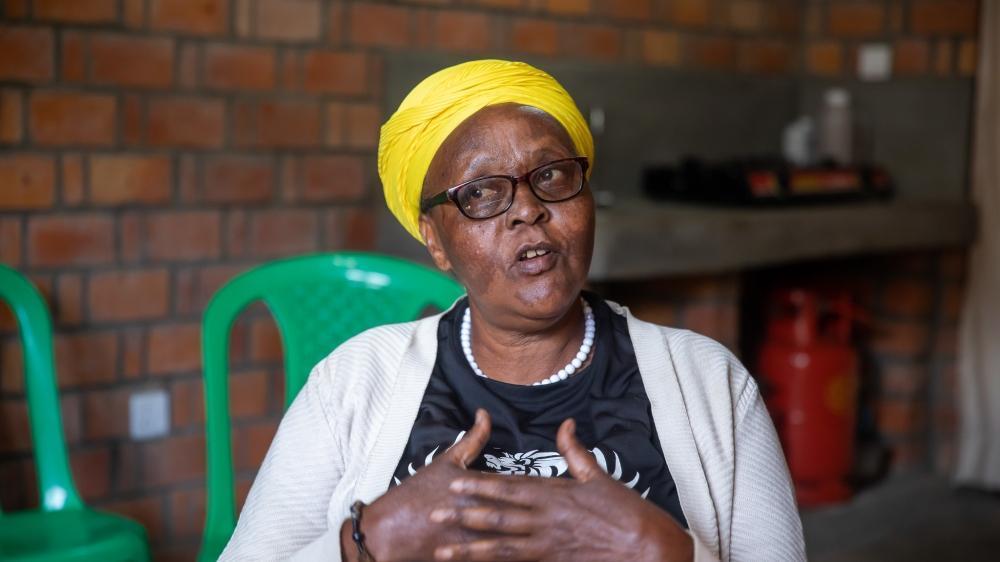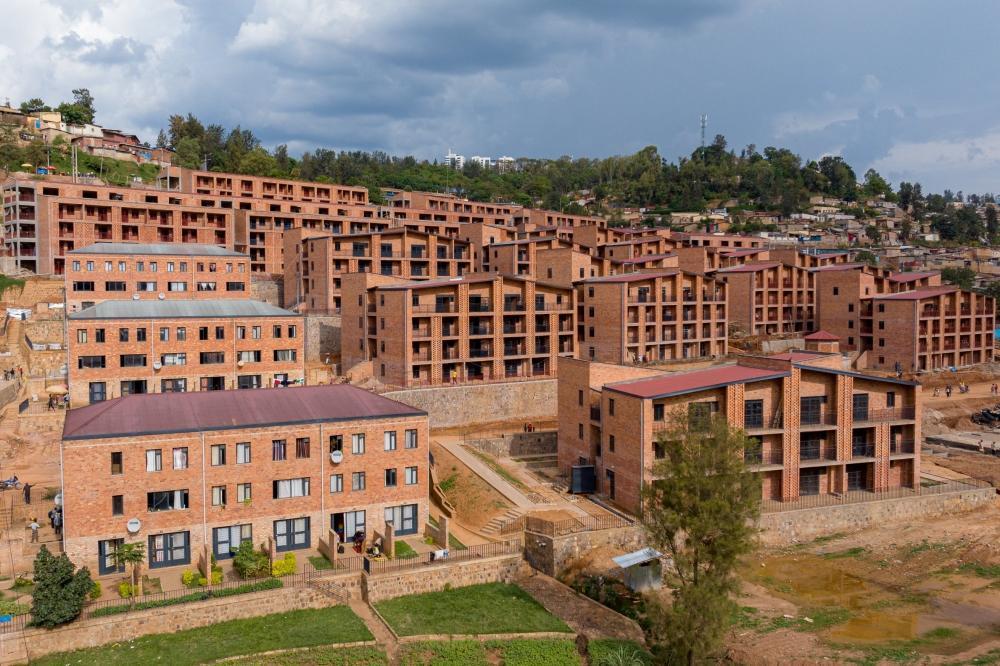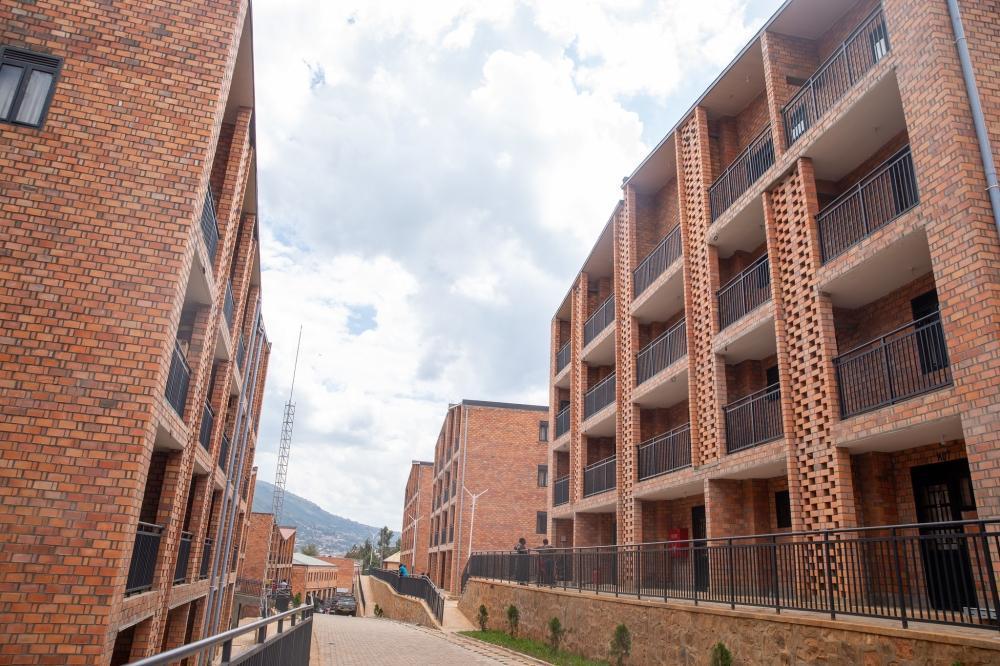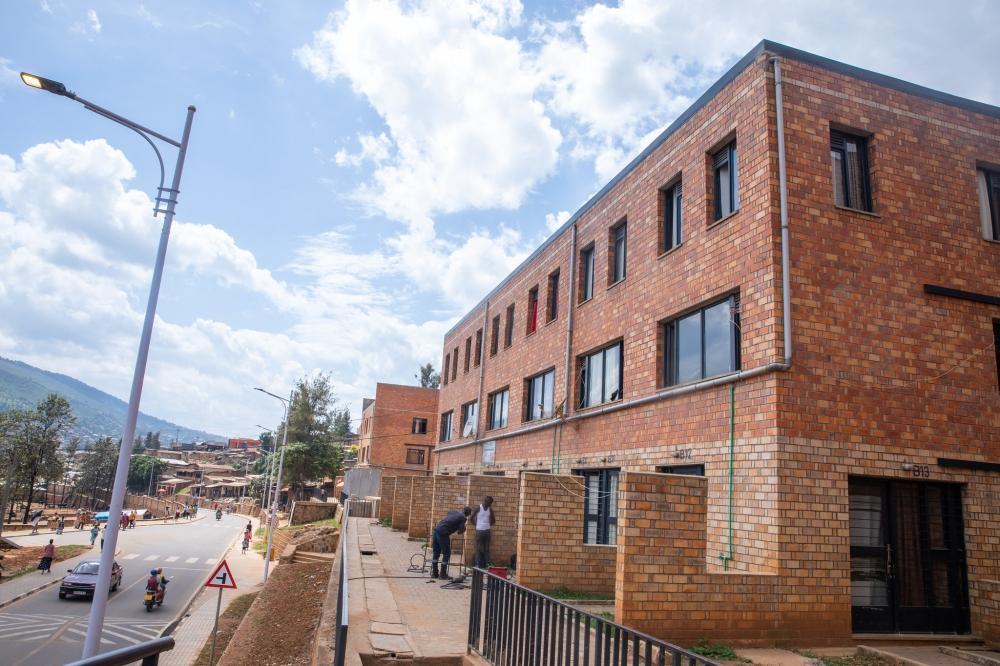Africa-Press – Rwanda. As the City of Kigali continues to evolve and develop, much is being built to transform the city into a liveable and sustainable urban area. Among these changes, nothing comes close to what has happened in Mpazi.
Just a few years ago, the area below what was once known as ‘1930’ – near Nyarugenge Prison, extending towards the Mpazi ravine and Cyahafi, was an informal settlement filled with old, dilapidated houses.
Residents of this area faced significant challenges due to inadequate infrastructure and poor living conditions.
During the rainy season, the situation became especially dire, with frequent flooding and landslides that posed serious risks.
In April 2020, the collapse of a retaining wall caused further destruction, marking the area as a high-risk zone.
Today, however, this part of Gitega Sector in Nyarugenge District has undergone a remarkable transformation.
The government, through the City of Kigali, implemented the Mpazi Rehousing Model – an urban redevelopment initiative aimed at rebuilding the area in a safer and more sustainable way.
Residents have now entered a new chapter in their lives. Many families were relocated to newly constructed homes, reflecting a broader commitment to urban development that prioritises dignity, safety, and community well-being.
We feel safe now
Imelda Mukasharangabo, 70, is one of the residents who benefited from the relocation program, which targeted households living along the Mpazi ravine. She is among the 50 families recently moved into the new housing units.
Mukasharangabo recalls the challenges her community faced before the relocation.
“We used to live further up in the neighbourhood known as ‘Ubukorikori’ in Kabahizi Cell,” she shares. “But an issue arose with the road construction in the area – a retaining wall was erected and collapsed, threatening the homes of our neighbours and eventually ours too.”
Her home was no longer safe, so she was relocated like many others. “At first, we were without housing, though we received temporary rental support. Thankfully, by November, I learned that we would soon have permanent housing – and now, in May, we finally have a place to call home.”
Since moving into her new unit, Mukasharangabo has experienced significant improvements in her life. “We are settled, and we have water piped directly into the house. We were also given cooking gas, and even though I moved in a few days ago, I received everything I needed,” she explains.
“The conditions here are good. Even if something like a door breaks or an appliance stops working, technicians come and fix it quickly.”
Mukasharangabo also appreciates the safety of her new home. “Where we used to live, we struggled with access to water and were vulnerable to landslides. But now, we feel secure. There’s peace, and since moving here, there have been no incidents of theft or violence.”
Her only request is improved hallway lighting for night-time safety. “Corridor lights are important, just like in our previous homes where there was always a security light,” she notes. “We’ve been told to report any that stop working.”
She urges the beneficiaries to do their part in maintaining the new houses. “We must also do our part – cleanliness is key. A home without cleanliness is no home at all,” she says, adding that the new residents shouldn’t leave everything to the government.
“We must care for what we’ve been given: the water taps, the gas, the toilets. We mustn’t block the drainage or dump trash in the corridors like we did in the rural areas. We should live respectfully and responsibly,” she says.
Even though she lives alone, everything she needs is nearby – markets, small shops, and Nyabugogo is not far either. She no longer worries about living close to others, as the houses are designed to provide each household with space and privacy.
Mukasharangabo is thankful to the government. At first, when they were moved, she was worried about her fate and felt a sense of fear, but she knew being moved was for their own good and trusted that the government had a plan for them.
“The government is like a parent, and no parent wishes to do something bad to their own child,” she says, encouraging even those who still fear being part of the rehousing project to drop their worries and join the program.
Under the rehousing project, former homeowners whose houses were demolished are given units equivalent to the value of their former property.
We are truly grateful
Her sentiments are echoed by 67-year-old Françoise Byukusenge, another resident whose life has been transformed by the relocation project.
A survivor of the Genocide against the Tutsi, Byukusenge has endured many challenges.
“I was left with one child, who is now married with four children of their own. Life had become too hard back home – so many people died, entire families were wiped out. Like many others, I was displaced,” she reflects.
Byukusenge moved to Kigali from Nyanza in the Southern Province in pursuit of a more secure life. “It took years,” she recounts.
“From 1994 through the late 2000s, I built my home gradually, with the support of my children.” Unfortunately, the house she had worked so hard to build in the Ubukorikori neighbourhood was ultimately destroyed due to the collapse of a nearby road.
“The government responded quickly, helping us find rental homes and paying for our accommodation while new houses were being built.”
Her new home is a significant improvement from the conditions she once endured. “I was told my former house was valued at around Rwf40 million,” she says. “Now, I’ve received a fully furnished unit with a sitting room, bedroom, and other spaces. It’s part of a three-unit structure shared with families who faced similar circumstances.”
Byukusenge has had no complaints so far. “Living with others isn’t a problem for me. In life, you’re always surrounded by people. Even if issues arise, the authorities are there to help mediate and keep the peace.”
A transformed community
Clarisse Umutoni, the local leader of Izuba Village, says the area – once a slum settlement, has undergone a complete transformation.
“Previously, conditions here were terrible,” she recalls. “The area was muddy, and there weren’t even proper paths. Houses were run-down, with broken roofs held in place by stones. There were no toilets.”
Today, the change is striking. “Now, the environment is clean, well-planned, and safe. The houses are in good condition. The improvement is remarkable,” she adds, noting that the resettled families are not only happy but also relieved to have left such difficult conditions behind.
Umutoni emphasises that the transformation is evident to anyone who visits. “You can feel the difference. The families who’ve moved in are clearly grateful. You can see it in their faces – they’re thankful,” she says, commending the government for ensuring a smooth transition.
“Honestly, many didn’t believe this day would come. Some thought they’d be stuck in those poor conditions forever. But when they received their keys, they were overwhelmed with gratitude – to God, and to the President who made this possible,” she adds.
Looking ahead, Umutoni is optimistic. So far, residents haven’t reported any major issues. “Everyone seems happy, sleeping peacefully and feeling at ease. The goal now is to take care of what we’ve been given and preserve it.”
She also highlights the thoughtful way housing was allocated. Age and physical ability were taken into account – for instance, elderly residents were placed in ground-floor units to ensure easy access.
We have security and comfort
Ephron Munyentwari, a 53-year-old resident of Ubukorikori Village in Kabahizi Cell, and one of the beneficiaries, says he feels relieved and comfortable in his new home. Before moving in, he and others received government support to rent temporary housing.
He explains that while they previously owned homes, they were neither in good condition nor up to standard. “Before, I had a house with five rooms and a sitting room. Now, I’ve been given two units, each with one bedroom and a sitting room. We’re very happy with this,” he says.
Designing with dignity and sustainability
Patrick Iradukunda, an architect at Gasabo 3D Design Ltd – the firm responsible for designing and supervising the construction of the new rehousing units in Mpazi, highlights the project’s innovative approach.
“Our main goal was to ensure these houses meet safety and durability standards while preserving the dignity and cultural identity of the residents,” he explains.
He emphasises using local materials and sustainable techniques. “We prioritised locally sourced materials to reduce costs and support local businesses. Our designs focus on energy efficiency and proper ventilation to enhance residents’ quality of life,” Iradukunda says.
Community involvement was key during the design phase. “We engaged with residents to understand their needs and routines, creating spaces that are both functional and respectful of their lifestyles,” he adds.
He believes the approach can be replicated across Rwanda. “With thoughtful design, community input, and sustainable building practices, we can transform more neighbourhoods and provide safe, affordable, and dignified housing for all,” he notes.
The Mpazi project was completed in about a year.
Expanding the model elsewhere
With the Mpazi rehousing model established, the City of Kigali plans to replicate it in other informal settlements outside the city master plan.
“The City of Kigali considers the Mpazi Rehousing Project a major success in improving housing conditions while upgrading informal settlements in a dignified, community-driven way,” says Emma-Claudine Ntirenganya, Director General of Communication and Education at the City of Kigali.
“We’re moving forward with similar projects, particularly in Gasabo and Kicukiro Districts. In Gasabo, work will soon begin on the Nyabisindu site, which will include over 1,600 housing units,” Ntirenganya told The New Times.
Construction is expected to be completed within a year, as with Mpazi.
“These efforts aim to ensure safe, affordable, and well-planned urban housing, reducing unplanned settlements and transforming existing informal areas with inadequate housing,” she said. The model is feasible because it integrates local solutions – from locally produced bricks to local labour, supporting job creation while remaining eco-friendly and cost-efficient.”
A solution to affordable housing challenges
Regarding affordability, Ntirenganya explained that the City does not buy land; instead, citizens voluntarily provide it and receive new homes of equal value once the units are completed.
“This exchange system ensures transparency and fairness, avoiding the burden of land acquisition costs. The houses are durable and low-maintenance, suitable for long-term family use. We’re also encouraging residents to develop a sense of ownership and commitment to upkeep,” she said.
As Rwanda urbanises, Ntirenganya stressed wise land use to promote efficient housing.
“The Mpazi model encourages multi-storey housing, which is more space- and cost-efficient. We are engaging private investors, cooperatives, and families to adopt similar approaches, such as pooling resources to build shared multi-family buildings on a single plot,” she explained.
“This model offers a practical, financially viable alternative to traditional standalone housing,” she observed.
The Mpazi Rehousing Project is part of the City of Kigali’s broader initiative to tackle informal settlements and improve urban living conditions.
The City plans to construct 10,000 affordable houses over the next five years at a cost of Rwf77 billion, targeting three informal settlements.
These efforts support Rwanda’s goal to reduce informal settlements to 20 per cent of the urban population by 2050, reflecting its commitment to sustainable development.
Ephron Munyentwali and his wife, his family was given two houses in the new village_
Izuba Village leader Clarissa Umutoni during interview
Imelda Mukasharangabo, 70, speaks to journalists at her new home
Francoise Byukusenge, 67, one of residents who were given houses at Mpazi Model Village
A view of the newly constructed housing blocks to accommodate residents identified as high risk zone dwellers in Nyarugenge District near Mpazi
.
https://youtu.be/_dE-XMizymo
For More News And Analysis About Rwanda Follow Africa-Press

